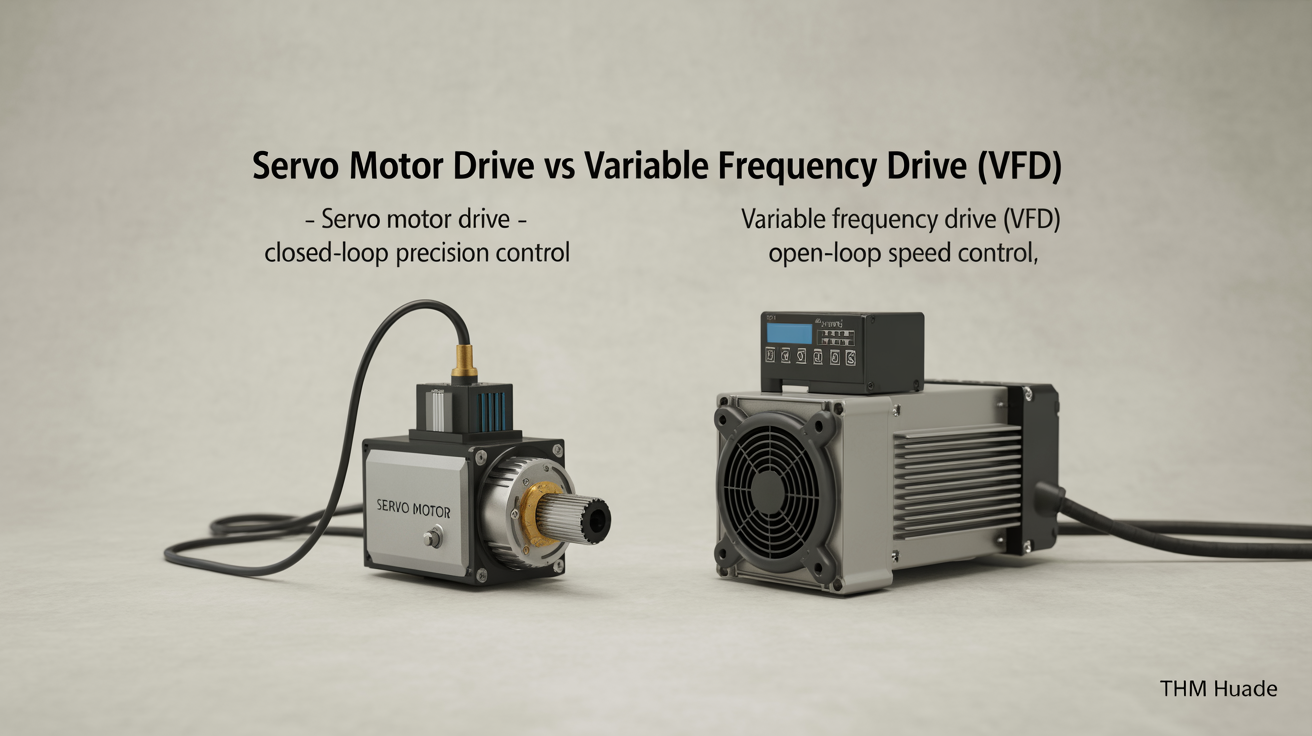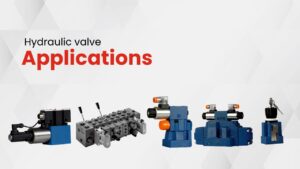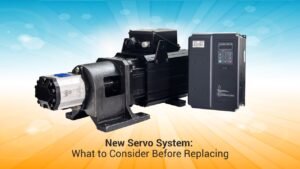Motion control technology is the heart of automation & industrial machinery used in modern machinery. The two most common drive systems (drives) engineers select between are Servo Motor Drives and Variable Frequency Drives (VFDs). Both are meant to control the speed and torque of electric motors; however, they vary vastly in terms of applications, efficiency, and performance. The choice depends on factors such as precision, cost, speed regulation, and energy efficiency requirements for your projects.
In this blog, we will discuss working principles, applications, advantages, and prices of servo motor drives and VFDs. After reading, you will know exactly which system is most suitable for your needs.
What is a Servo Motor Drive?
A servo motor drive is a type of controller that controls the motion of a servo motor. Servo drives, on the other hand, utilize feedback signals to provide extreme control over the position, angle, speed, and torque of the motor, in contrast to a binary on/off mechanism.
Servo Motor Drive Working
A servo motor drive works by taking a command signal (from a PLC or controller) and comparing it to feedback from an encoder or resolver connected to the motor. In cases of a discrepancy between the command and actual position, the drive immediately responds to the error. This principle is also applied in servo motor driven hydraulic pump systems, where precise motion control ensures efficient pressure regulation and energy savings in industrial applications.
The ultra-high precision makes this closed-loop system ideal for robotics, CNC machines, packaging machines, medical equipment, and other automation systems requiring accurate positioning and dynamic control.
Applications of Servo Motor Drives
- Robotics and automation
- Printing presses
- CNC milling and lathing
- Textile machinery
- Aerospace equipment
Servo Motor Drive Repair
Any high-tech electronic device, such as servo drives, can also be subjected to various glitches, including overheating, signal loss, malfunctioning feedback systems, and power supply issues. To reduce downtime, it is necessary to repair the servo motor drive on time. Many servo motor repair and drive service specialists focus on recalibrating systems, replacing damaged parts, and restoring performance successfully to ensure reliable and efficient operation.
Servo Motor Drive Price
Servo motor drive prices vary depending on the brand, model, and power rating. These can be as low as a few hundred dollars for a basic unit or thousands for a top-of-the-line industrial servo drive featuring advanced capabilities. They are more expensive than VFDs, but they deliver exceptional precision and performance.
What is a Variable Frequency Drive (VFD)?
A VFD is a device that controls the speed of an AC motor by varying the frequency and voltage of its power supply. However, VFDs usually function with open-loop systems (no continuous feedback for precision), unlike servo drives.
How a VFD Works
A variable frequency drive (VFD) is a device that converts AC power of constant frequency to AC power of variable frequency. They use this frequency to control the speed and torque of the motor.
This results in VFDs being ideal for locations where precise positioning is not needed, but variable control and energy savings are a must.
Applications of VFDs
- Pumps and fans
- HVAC systems
- Conveyor belts
- Industrial mixers
- Elevators and escalators
Advantages of VFDs
- Energy savings through speed control
- Reduced mechanical stress on motors
- Lower operational costs
Servo Motor Drive vs VFD: Key Differences
| Feature | Servo Motor Drive | Variable Frequency Drive (VFD) |
| Control | Closed-loop (feedback system) | Open-loop (feedback optional) |
| Precision | Extremely high, accurate positioning | Moderate, suited for speed control |
| Applications | Robotics, CNC, automation | Pumps, fans, conveyors |
| Response Time | Very fast, handles complex motion | Slower, designed for steady operations |
| Complexity | Higher, requires tuning and setup | Simpler, plug-and-play in many cases |
| Cost | Higher | More affordable |
When Should You Use a Servo Motor Drive?
- Use cases that require high precision and accuracy.
- Dynamic Motion Control for Complex Applications
- For robotics, printing, or CNC machines
- Where we need to accelerate and decelerate quickly
When Should You Use a VFD?
- To optimize energy efficiency in your HVAC or pumping systems
- When there is only a need for speed regulation
- In applications such as conveyors or fans, where accuracy is not as important
- For applications where the cost-effectiveness is the top priority
Cost Comparison
Servo motor drives, being closed-loop solutions with better components and feedback, are costly in terms of price. But they are worth investing in, considering various applications requiring high precision, where every movement of the motor is important. On the other hand, VFDs are economical and used widely where only speed control is required.
For applications where precision is not the main point of concern and where money is tight, VFDs are the way to go. However, when your process requires accuracy, servo drives are worth the expense.
Conclusion
While servo motor drives and VFDs alike play important motion control roles, they fill different needs. Servo drives offer unmatched precision and rapid response, and VFDs provide inexpensive speed control and energy savings.
In the end, it all comes down to whether you want precision and performance or affordability and simplicity.
THM Huade provides servo motor drives, servo motor drive repair service, and industrial automation solutions for businesses seeking quality and durability.
FAQs
Q2. Can a VFD replace a servo motor drive?
No. Although they both appear to control motors, a VFD cannot control motors as precisely or with the feedback-based accuracy of a servo motor drive.
Q3. How often does a servo motor drive require repair?
The frequency of servo motor drive repair depends on usage, environment, and maintenance practices. With regular upkeep, repairs may only be needed after several years.
Q4. Why are servo motor drives more expensive than VFDs?
Servo motor drives are more expensive due to their sophisticated electronic circuitry, feedback systems, and accurate performance, making them suitable for high-end applications.


